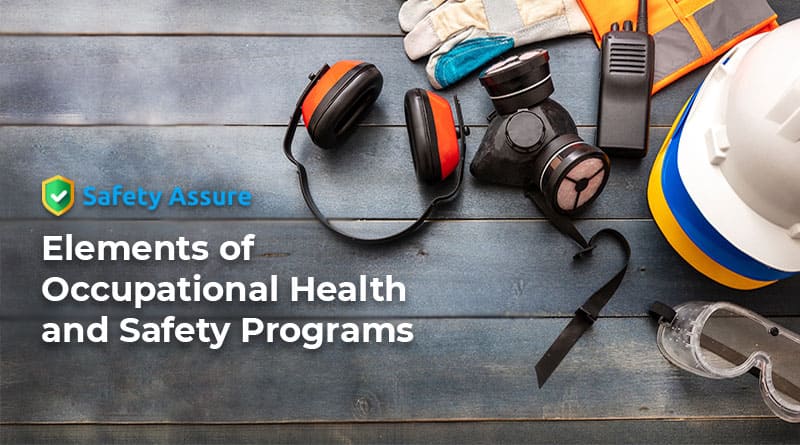Approximately 1.4 million workers in the US are affected by a serious work-related injury or illness every year. Creating a safe and worker-friendly environment can reduce this number as well as the seriousness of workplace injuries. Workplace safety programs are tools that can effectively develop a risk-free and productive work environment for employees, by assessing threats, awareness, training, and safety program evaluation. Because workplace injuries are costly at physical, financial, and psychological levels to employees and their families, designing and implementing an effective occupational health and safety (OH&S) program is essential to avoid costly and deadly consequences.
Basic Elements of an OH&S Program
Every OHS program should be designed to meet the specific requirements of an organization, as well as any legislated requirements. However, there are some basic elements that every OHS program should consider:
- Worksite analysis to identify all processes and activities. This should be a continuous process to identify all existing and potential hazards.
- Ensure management commitment and employee involvement. The manager or management team leads the way by setting up the policy, assigning and supporting responsibility, setting a positive example, and involving employees.
- Check, with the help of the crew themselves, whether any activity has significantly associated hazards that could cause harm.
- Reduce risks that can lead to serious injury (accidents or long-term sickness) by removing the hazard, modifying the work process, protecting crew, etc.
- Verify whether the measures you have in place to protect the crew are working properly and that rules are being followed.
- Provide training for employees, supervisors, and managers. Ensure they are trained to understand and deal with worksite hazards.
- Improve by always looking out for what could be done better and more safely.
Evaluating the Effectiveness of OH&S
The number of injuries and illnesses at work should not be the only indicators used in evaluating the effectiveness of an OH&S program; not all incidents are always reported and documented. An additional audit, which uses a checklist and series of questions as well as interviews, questionnaires, and observations with a corresponding weighting factor, can be used to evaluate the efficacy of an OHS program. This should be followed by corrective actions with target dates and checks for their completion.
Occupational health and safety programs are an extremely important activity in the workplace. It helps in reducing the risk of injuries that affect the health and wellness of workers. Since workplace accidents are costly in nature, reducing their occurrences by improving workplace safety also improves a company’s bottom line.
Have You Tried Safety Assure?
If you are planning to design an occupational health and safety program for your workplace, you should check out Safety Assure. Safety Assure helps companies establish a safer workplace without the administrative burden. Our easy-to-use mobile app for OSHA recordkeeping for injury and illness enables your employees to log incidents, accidents, near misses, and observations with ease and wherever these events are noticed. Complying with safety standards to avoid penalties and lower operational costs have never been easier!



















